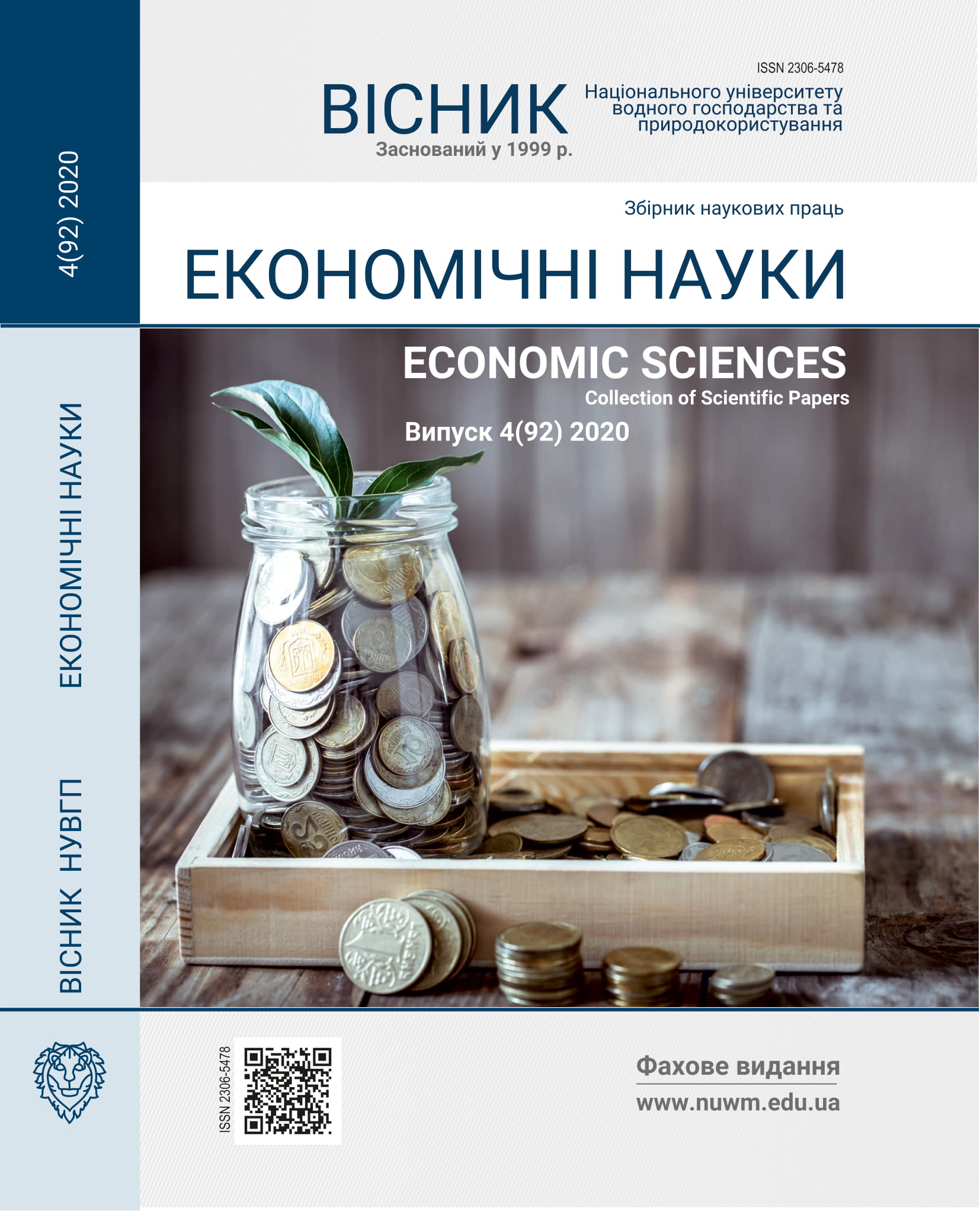STRATEGIC MANAGEMENT OF THE ORGANIZATION`S INTELLECTUAL ASSETS
DOI:
https://doi.org/10.31713/ve4202033Keywords:
intellectual assets, strategic management, strategy, audit, intellectual property.Abstract
In modern conditions, the main value becomes the development ofeducational, intellectual and creative potential of human as the main sources of intellectual activity. Particular attention to the issue of intellectual asset management is caused by the shift of emphasis from tangible material assets to the implementation of innovations and the direction of investment in the development of intangible and intellectual assets. Intellectual assets can not only increase the book value, but also provide capitalization of the company with possible entanglement of additional investment resources.Creation and use of intellectual assets, their capitalization and commercialization led to the emergence of new business processes inorganizations. Creation, accumulation and effective use of intellectual assets are possible only if there is an effective management system for such assets in the organization. As intellectual assets increasingly contribute to business development, every organization must have an intellectual asset management strategy. An important step in any organization that manages intellectual assets is to monitor (audit) existing assets.The organization should also inform its staff about the strategicimportance of intellectual property within the organization. It is a process of raising awareness of different types of intellectual property, as well as the organization’s policy on these assets. The management of the organization should take part in this process, demonstrating the importance of creating and protecting the company’s intellectual assets. The intellectual asset management strategy should be integrated into the overall business strategy, as well as include internal policy elements such as privacy policy.Providing abidance of rights on intellectual assets is one of the most costly aspects of intellectual property portfolio management, which includes both mandatory payments and litigation against infringers’ actions. The key to successful management of intangible assets in the organization is to align the intellectual property strategy with its business strategy. Important aspects are the identification and audit of intellectual assets, their cataloging, and coordination of intellectual asset management strategy with other strategies in the organization, commercialization and protection of intellectual property rights. All these stages require a conceptual systems approach, planning and using of modern successful practices in the market.References
Karpenko A. V. Derzhavna stratehiia efektyvnoho vykorystannia ekonomichnykh resursiv v umovakh svitovoi hlobalizatsii. Visnyk Natsionalnoho universytetu vodnoho hospodarstva ta pryrodokorystuvannia : zb. nauk. prats. Ekonomichni nauky. 2014. Vyp. 3(67). S. 126–135.
Borisov A. B. Bolshoy ekonomicheskiy slovar. M. : Knijnyiy mir, 2006. 860 s.
Ibragimov E. E. Modelirovanie vliyaniya intellektualnyih aktivov na effektivnost korporativnogo upravleniya s orientatsiey na znaniya. Formirovanie ryinochnyih otnosheniy v Ukraine. 2012. № 5/1 (132). S. 119–124.
Liashenko N. Ye. Problemy otsinky intelektualnykh aktyviv v upravlinni. Upravlinnia proektamy ta rozvytok vyrobnytstva. 2009. № 3. S. 58–67. URL: http://nbuv.gov.ua/UJRN/Uprv_2009_3_9. (data zvernennia: 10.11.2020).
Stratehichne upravlinnia konkurentospromozhnistiu: systemnyi metod ta ekzystentsialna ekspozytsiia : monohrafiia / Moshak S. M., Miklovda V. P., Shandor F. F., Kubinii N. Yu., Kubinii V. V. Mukachevo : Karpatska vezha. 2017. 240 s.
Fine N. R. Intellectual Asset Management: From Information to Intellectual Property to Profit. Pro-Tec Dat. 2003. URL: http://www.pro-tecdata.com/pdf/IAM-InfoIPProfit.pdf/ (data zvernennia: 10.11.2020).
Gagnidze I. The role of international educational and science programs for sustainable development (systemic approach). Kybernetes. Vol. 47. No. 2. Pp. 409–424.
Paresashvili Nino. Corporate Culture In Terms Of Labor Diversity. Smart and Efficient Economy: Preparation for the Future Innovative Economy : International Conference. Brno, Czech Republic, 2016. Pp. 321–327.
Krelitz Susan Prohofsky and Sellke Alex (2014). Intellectual Asset Management at the Speed of Business. Cybaris®. Vol. 5. Iss. 1. Article 2. URL: http://open.mitchellhamline.edu/cybaris/vol5/iss1/2 (accessed: 10.11.2020).
Stobbe R. Intellectual asset management best practices. Part 1. Field Law. 2014. URL: https://www.lexology.com/library/detail.aspx?g=172f939b-eee1-43ec-9413-ff45d0462cc4 (accessed: 10.11.2020).

